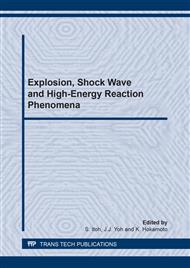p.1
p.11
p.21
p.35
p.41
p.47
p.53
p.59
Flow Visualization and Thermal-Fluid Flow Phenomenon in Single Plate Heat Exchanger with Various Plate Shapes Formed by Shock Processing Method
Abstract:
The aim of the present study is to improve heat transfer performance and to attenuate pressure drop in plate heat exchanger with the different plate shapes. In this study, the single plate model of the plate heat exchanger is made and the thermal fluid flow characteristics in the narrows channel are examined for two different shaped plates, i.e., separate herringbone and plover patterns and the results are compared with that of flat or herringbone plate. In addition, the flow of the fluid with the surface of the rugged plate in the plate heat exchanger was visualized by tuft method. It is found that if the separate herringbone plate whose pith is 2 is employed, heat transfer performance is substantially enhanced for the high Reynolds number region, while pressure drop is suppressed.
Info:
Periodical:
Pages:
35-39
Citation:
Online since:
January 2011
Authors:
Keywords:
Price:
Сopyright:
© 2011 Trans Tech Publications Ltd. All Rights Reserved
Share:
Citation:


